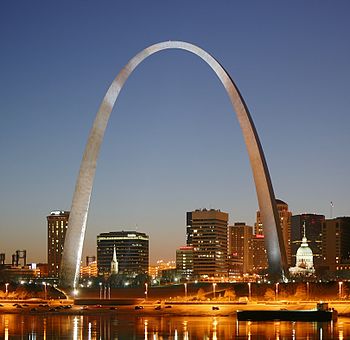


Aweighted catenary (also flattened catenary, was defined by William Rankineastransformed catenary[1] and thus sometimes called Rankine curve[2]) is a catenary curve, but of a special form. A "regular" catenary has the equation

for a given value of a. A weighted catenary has the equation

and now two constants enter: a and b.
Acatenary arch has a uniform thickness. However, if
it becomes more complex. A weighted catenary is needed.
The aspect ratio of a weighted catenary (or other curve) describes a rectangular frame containing the selected fragment of the curve theoretically continuing to the infinity. [6][7]

The Gateway Arch in the American city of St. Louis (Missouri) is the most famous example of a weighted catenary.
Simple suspension bridges use weighted catenaries.[7]